13 Types of Hawks in Oklahoma (With Pictures)
You can see hawks flying in the skies of Oklahoma. In total, you can spot 13 different species of hawks in Oklahoma. However, these birds of prey are more common in summer than in winter.
The hawks in Oklahoma mostly reside in the cypress swamps and scrublands. But you can definitely spot a few of them in the rocky mountain foothills, forests, rivers, and grass prairies. Spotted one of these magnificent birds in Oklahoma?
Read through to check which species you stumbled upon.
Are There Hawks in Oklahoma?
There are different species of hawks in Oklahoma. In fact, Oklahoma is the place you want to be in if you love spotting hawks.
Oklahoma’s rich landscape, which consists of hills, forests, and rivers, is perfect for hawk nesting. The common species of this state include Copper’s, Broad-Winged, Northern Goshawk, Broad-Winged, Red-Tailed, and Sharp-Shinned Hawk.
13 Species of Hawks In Oklahoma You Can Spot
It is possible to spot 13 different species of hawks in Oklahoma. Here is a brief description of each:
Northern Harrier (Circus cyaneus)
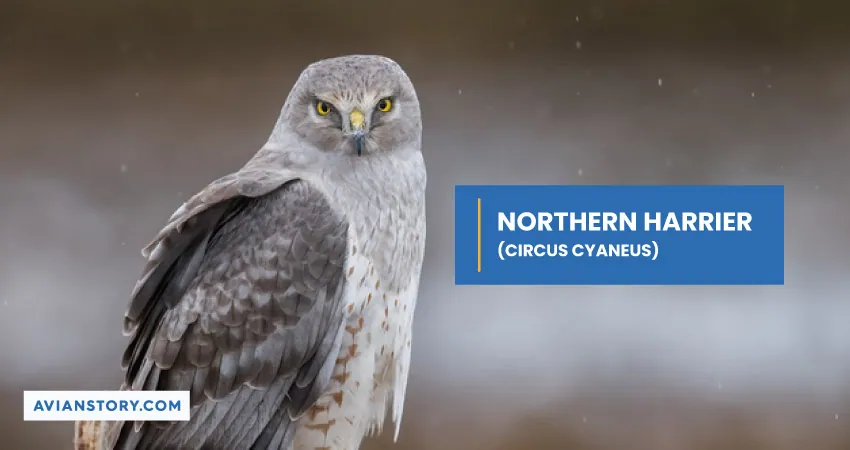
Although you can spot Norther Harrier hawks throughout the year in Oklahoma, they are most common between October and April. You will most commonly find them on marshes, over open areas, and in fields.
Attributes
The Northern Harriers have long, broad wings and slender bodies. Often, their size is comparable to a goose or crow. However, the most distinct feature of these hawks is that they take a V-shape during flight. Also, they have a whitetail spot and an owlish face.
Female Northern Harriers are brown in color, while the males have a gray upper body and white lower body.
Diet
These birds of prey mainly feed on small birds and small mammals. However, you can spot them carrying large-sized prey, which includes rabbits and geese. Also, their diet can change with the change of the season.
Nesting Preference and Eggs
Northern Harriers primarily nest on the ground. However, they will nest in concealed locations, such as tall clumps of vegetation and near low shrubs. If you head over to coastal and inland marshes, abandoned fields, and wet meadows, you can spot one of their nests.
During the breeding season, which is from March through July, females can lay 4 to 9 eggs. When laid, the eggs are pale blue, but they turn to dull white as time passes.
Sharp-Shinned Hawk (Accipiter striatus)
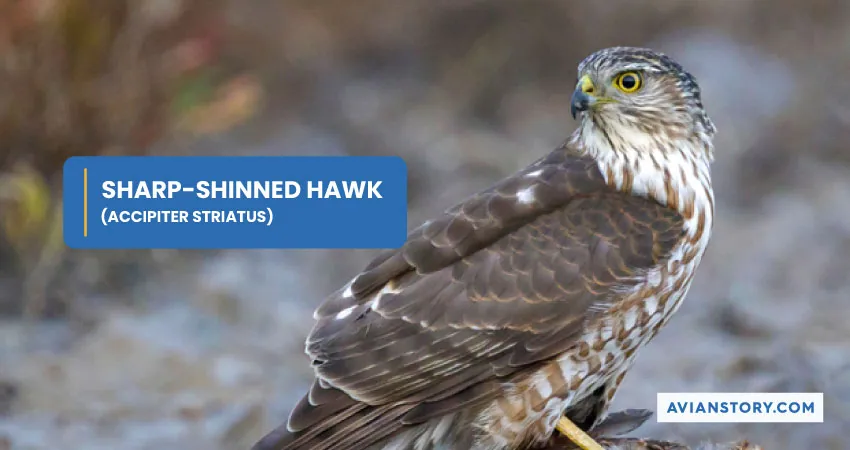
You will only find the small-sized Sharp-Shinned hawks in Oklahoma. However, the ones that are available in the state are extremely athletic and acrobatic. And you will mostly find them flying in the sky from September to May.
Attributes
One of the Sharp-Shinned hawks’ distinct features is the orange bars on the upper portion of their chest. These bars start from the chest and begin fading towards their stomachs. Also, they have blue-gray backs and wings.
Furthermore, these birds have short and round wings. However, they have long legs and tails. For having long-sized legs and tails, they can fly through forests at insanely high speed. In fact, they can fly as fast as 60 mph. And you should also know that female Sharp-Shinned hawks are considerably larger than male ones.
Diet
You will generally find Sharp-Shinned hawks together near bird feeders. They wait around such areas to feed on songbirds. Other than that, they fly at high speed and like to ambush small avians. And these small avians are basically 90 percent of their entire diet.
Nesting Preference and Eggs
The nests of Sharp-Shinned hawks are often found in the conifer trees, where dense cover is available. These birds tend to choose the tallest trees for nesting.
Sharp-Shinned hawks can lay anywhere from 4 to 5 eggs in the breeding seasons. Their eggs are blue-white in color with brown marks on the surface.
Cooper’s Hawk (Accipiter Cooperii)
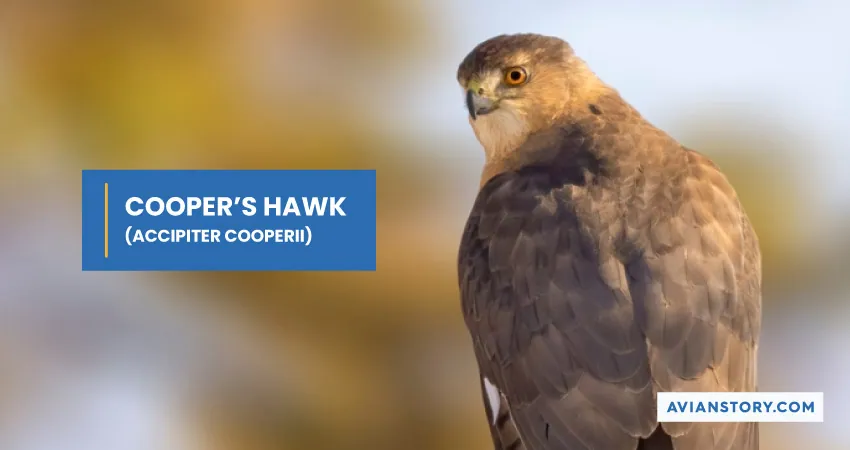
You can spot Cooper’s hawks in Oklahoma’s forests and wooded areas. These birds can be spotted in those two locations all year round. However, you can mistake them for Sharp-Shinned hawks.
Attributes
The Cooper’s hawks look pretty similar to Sharp-Shinned hawks. These birds have a blue-gray coat, a rufous coloring on the chest, and a little black cap. However, one thing that you need to note is that Sharp-Shinned hawks are comparatively smaller than Cooper’s hawks.
In fact, in comparison, Cooper’s hawks are about the size of a fully grown crow. So, in short, just look for larger heads and large bodies.
Diet
These hawks often hunt near the edges of wooded areas and forests. They primarily feed on small rodents and birds. You can also find them near residential bird feeders, where they creep up on small birds that are having a feast on the seeds and nuts.
Nesting Preference and Eggs
When it comes to nesting preferences, Cooper’s hawks like tall trees. You will often find the nests of these birds on the clumps of mistletoe or on top of old nests of other large birds.
Females usually lay anywhere from 3 to 5 eggs during the breeding season. These eggs are bluish-white in color. Some can be blue too.
Goshawk/Northern Goshawk (Accipiter gentilis)
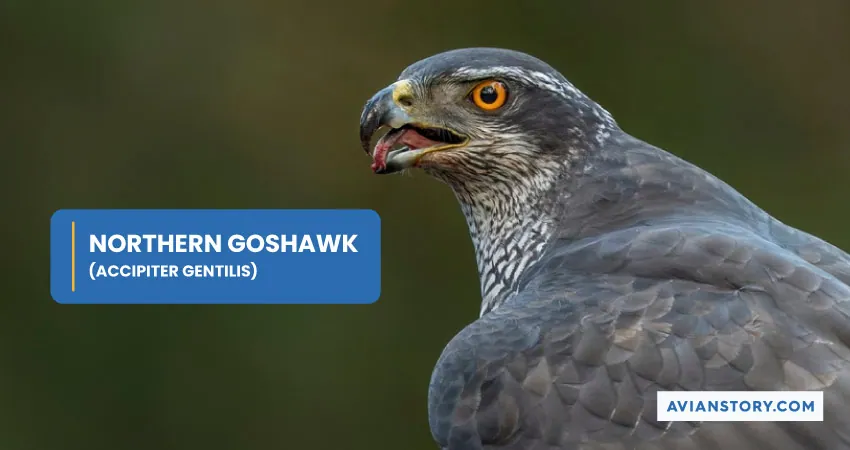
The Northern Goshawk can only be seen in Oklahoma during winter. That is when they migrate to the state. And the fact that they like to remain secretive can make it a bit hard for you to spot them in the skies of Oklahoma.
Attributes
These raptors feature a dark-colored head that is paired with deep red eyes. Their belly has a bluish-white to light grey coloring. On the upper body, the Northern Goshawks have blue-gray or brown coloring. There are specific markings on the upper body, which sets them apart from the other raptors.
Furthermore, they have broad, short wings. These birds also have pretty long tails.
Diet
The Northern Goshawks feed on a variety of foods. That includes other birds, reptiles, insects, and mammals.
Nesting Preference
These birds of prey often choose the largest trees for nesting. They tend to select a spot that is next to a trunk of a large horizontal branch. You can find some nests near the secondary crotch of trees.
The clutch size of these raptors is 2 to 4 eggs. They typically lay blue eggs and can be relatively large in size.
Common Black Hawk (Buteogallus anthracinus)

Although these raptors have “common” in their name, they are rarely seen in Oklahoma. However, if you look for them in the months of May and August, you can see them near water bodies.
Attributes
The Common Black hawks have broad wings, large bodies, and long legs but short tails. As the name suggests, they are primarily black in color. However, you will see some white coloring across the tails.
Other than that, the flight feathers of these birds are pale in color. And on the legs and bill, they have a long yellow base. The juveniles have a dark mustache and are streaky brown in color.
Diet
These birds tend to fly around water bodies, where they hunt for small mammals. They eat whatever is available, including fish, frogs, rodents, and ants. You can even spot them eating eggs.
Nesting Preference and Eggs
The clutch size of the Common Black hawk will be anywhere from 3 to 4 eggs. Most often, the eggs of these birds will have reddish-brown blotches and will be greenish-white in color.
In terms of nests, their preferred sites are the trees along water streams. However, they like to nest on tall trees. Usually, their nests will be 30 to 90 feet above the ground.
Harris’s Hawk (Parabuteo unicinctus)
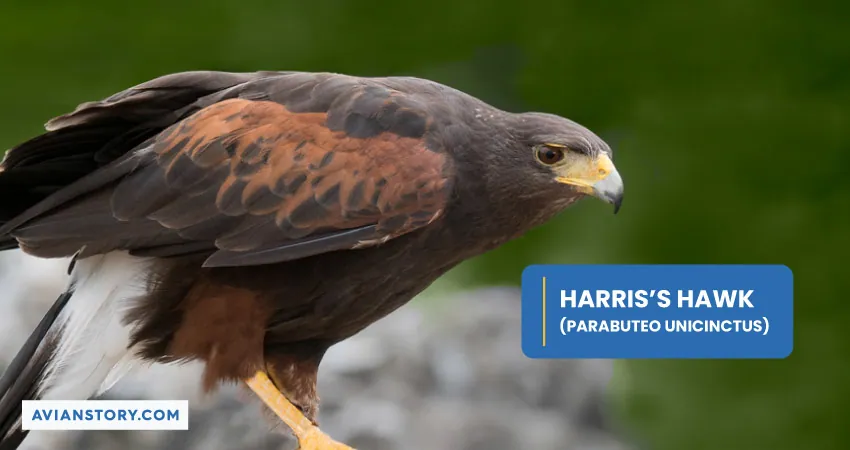
The Harris’s hawks can be spotted in Oklahoma between October and march. As these birds are more social than other raptors, you will usually see them in pairs or groups of three or more.
Attributes
Most of the hawk spotters know Harris’s hawks as handsome hawks. Their standout feature is the bold markings. The bodies of these hawks have those markings in white, chestnut red, and dark brown. They also have yellow markings on their face.
Besides that, these birds of prey have long yellow legs. Overall, the physical attributes of these hawks make are pretty eye-catching.
Diet
These birds live off other birds, small mammals, and lizards. You will often find them eating rabbits, rats, and squirrels. Also, they are great hunters.
Nesting Preference and Eggs
Harris’s hawks will select tall and sturdy structures for nests. Often, you will find them living on tall cliffs and trees. Females can lay as low as 1 egg to 5 eggs. The eggs of these hawks are pale, bluish-white in color. Sometimes, there will be brown spots on the surface.
Red-Shouldered Hawk (Buteo lineatus)
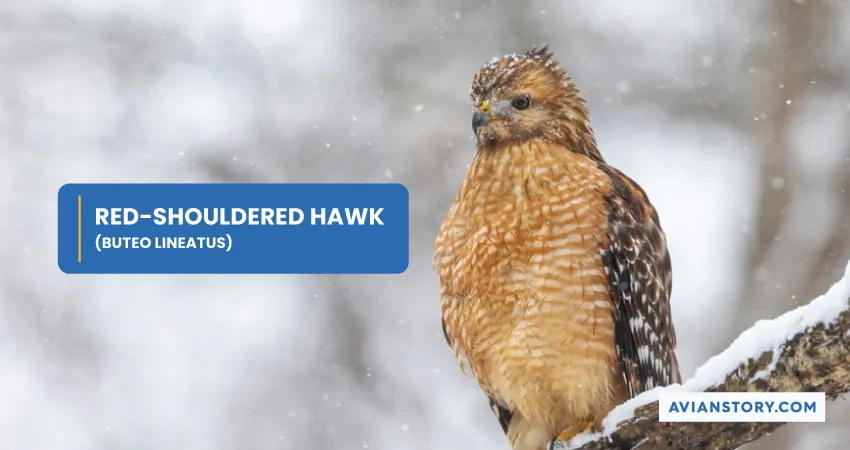
The Red-Shouldered hawks are present all year round in the eastern part of Oklahoma. It will be fairly easy for you to spot one as they are known to make loud whistles.
Attributes
These raptors have distinctive markings on their bodies. They have white and dark checkered wings. And as the name suggests, these birds have reddish barring on the chest and around the shoulders.
The birds also have strongly banded tails and bodies that are between the size of crows and swans. Also, they have translucent crescents around their wingtips.
Diet
The Red-Shouldered hawks love dining on lizards, amphibians, and snakes. They also feed on small mammals such as squirrels and rabbits.
Nesting Preference and Eggs
For nests, red-shouldered hawks use the crook of the trunks. They select deciduous trees and like to set up nests that are halfway up the trees. Although they like to find spots that are high up on the ground, their nest remains within the canopy.
The female Red-Shouldered birds are known to lay from 3 to 4 eggs during the breeding season. Their eggs are bluish to white in terms of color.
Broad-winged Hawk (Buteo platypterus)
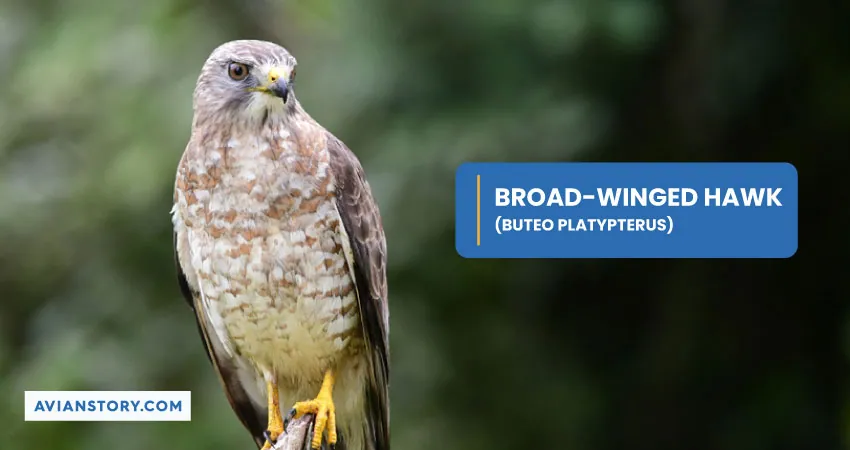
The Broad-Winged hawks can be spotted in the skies of Oklahoma during April and June. These two are the months when the birds breed. However, you can also catch them flying from July to October. That is when they migrate to the south.
Attributes
Broad-Winged hawks have stocky and compact bodies. The size of the bird is somewhere between a crow and a goose. These birds have reddish-brown heads, narrowly banded tails, and barred chests. Also, the underside of these birds is creamy-colored.
Apart from that, their whistle is sharp and piercing. You will not fail to hear them whistling if you are within close proximity.
Diet
These hawks live off small mammals, snakes, frogs, and sometimes, young turtles. They are known to be pounce hunters. However, they can stop and sit on the top of the trees to get a fair idea about prey in new territory.
Nesting Preference and Eggs
The nesting site of Broad-Winged is generally at the lower part of a large tree. They do not have much preference regarding the type of tree. It can either be coniferous or deciduous. But the typical height of their nest will be anywhere from 25 to 40 feet above the ground.
And in the nest, you can find anywhere from 1 to 5 eggs during the breeding season. Their eggs have a whitish coloring and brown spots.
Swainson’s Hawk (Buteo swainsoni)

Swainson’s hawk is the third most common hawk among all the hawks you can see in Oklahoma. These birds can be seen in the state from April to October. And they will mostly remain on the west side of the state.
Attributes
These hawks are known for having long wings with pointed wingtips. However, their tails are short. Usually, they have gray or brown mottle on the back. Their bellies are light in color and tend to have red or brown chests.
During the flight, it is easy to see the contrast between the white upper part of the wing and the black feathers on the lower edges of the wings.
Diet
The Swainson’s hawks hunt while staying on high points. They will use anything that gives them the advantage of height, which includes fences and utility poles.
These birds usually feed on rodents, small reptiles, and mammals during the summer. In other seasons, you can spot them munching on large insects.
Nest Preference and Eggs
Male Swainson’s hawks are in charge of choosing the nesting site. And they will often choose one that is in a small grove of trees or on top of a solitary tree. Their nesting preference is mostly influenced on the fact whether there is a stream nearby or not.
If you happen to come across a nest of these birds during the breeding season, you will see 2 to 4 white eggs inside. These eggs can have faint brown marks on them.
Zone-Tailed Hawk (Buteo albonotatus)

The Zone-Tailed hawks are not that common in Oklahoma. You can only spot them in the Wichita Mountains if you are lucky enough. Otherwise, they do not venture around the state that much.
Attributes
Zone-Tailed hawks are known to be lightly built raptors. They have slim wings and fairly long tails. In terms of body size, they are smaller than Red-Tailed hawks. However, adults are generally within the size of a goose and a crow.
You can identify them for the white and black barred undersides. They also have a grayish-black color throughout their entire body. Another unique trait is their flight feathers. They are two-toned, which looks a lot like turkey vultures.
Diet
The diet of the Zone-Tailed hawks mainly consists of birds, reptiles, amphibians, and mammals. They fly low while hunting and use the landscape to their advantage. These birds will hide until it is the right time to jump on the prey.
Nesting Preferences and Eggs
Cactus in the open desert, canyon walls, and large trees along the creeks are where you can find the nests of Zone-tailed hawks. These birds can lay 1 or 2 eggs during the breeding season. Their eggs are whitish-blue or white in color.
Red-Tailed Hawk (Buteo jamaicensis)
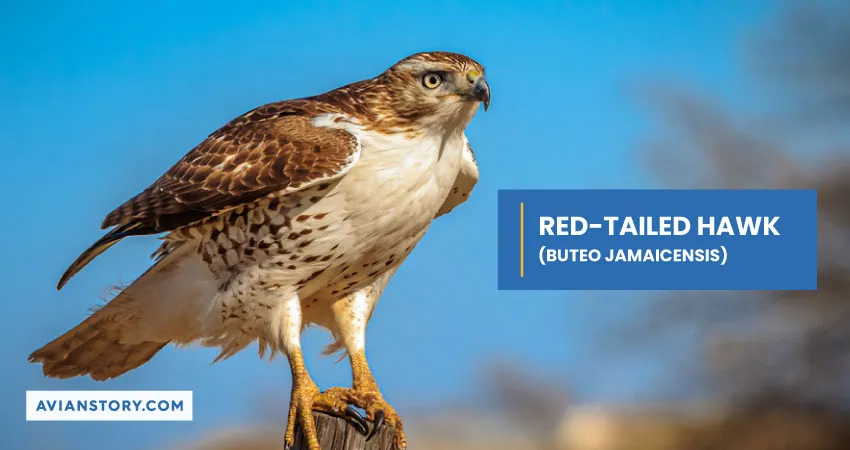
The Red-Tailed hawks are the most common hawks in Oklahoma. You can spot one of them during both summer and winter. However, their numbers increase during the winter, which is the season when other birds migrate from their breeding grounds.
Attributes
Just like the name states, the Red-Tailed hawks have red tails. Apart from being red in color, their tails are short and wide. However, their wings tell a different story. They are rounded and pretty broad.
Other than that, you can identify them for their white-to-black plumage coloring. They also have darker brown upper parts and creamy-colored under parts. Sometimes, you can spot adults with very warm cinnamon-red feathers.
Diet
The Red-Tailed hawks are known to adapt extremely well in any given environment. However, regardless of where they are nesting, they mostly rely on squirrels, rabbits, voles, rats, mice, and other reptiles. Occasionally, they can feed on other large birds.
Nest Preference and Eggs
Red-Tailed hawks like to have a commanding view of landscapes. That is why they will try to put their nests on the tallest trees. Their preferred spot is the crows of those trees.
When it is breeding season, the nests of Red-Tailed hawks can have 1 to 4 eggs. Their eggs are brown-spotted and whitish in color.
Rough-Legged Hawk (Buteo lagopus)
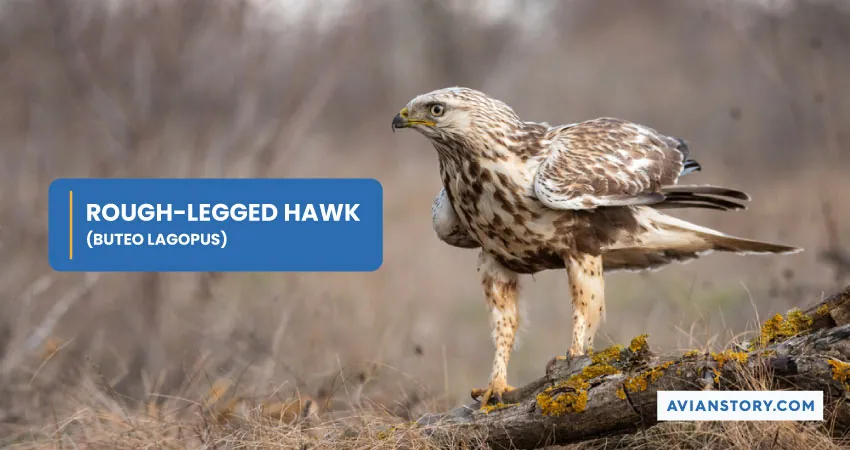
Another rare type of hawk in Oklahoma is the Rough-Legged hawk. They are often spotted from November to March, which is winter. And you can see one of them flying on the north side of Oklahoma during the season.
Attributes
These birds have feathered legs, which is the reason why they are called “rough-legged.” It is believed that the feathered nature of their legs keeps them warm in the Arctic.
Other than that, their bodies are quite large in size. These chunky raptors will have random patterns of white and brown plumage on their body.
The Rough-Legged hawks are also known for having a white head, mall curved yellow bill, black eyes, and pale tail. They often have dark patches at the end of their tails, bend of the wings, and across their bellies.
Diet
Red-Legged hawks have a unique style of hunting. They tend to hover in the wind and jump at the prey at the right time. Their usual diet contains voles, mice, and shrews. However, in the Arctic, they primarily feed on lemmings.
Nesting Preference and Eggs
For nests, the rough-legged hawks prefer cliffs, treeless tundra, uplands, boreal forests, and alpine regions. The females are known to lay 3 to 5 bluish-white eggs during the breeding season.
Ferruginous Hawk (Buteo regalis)
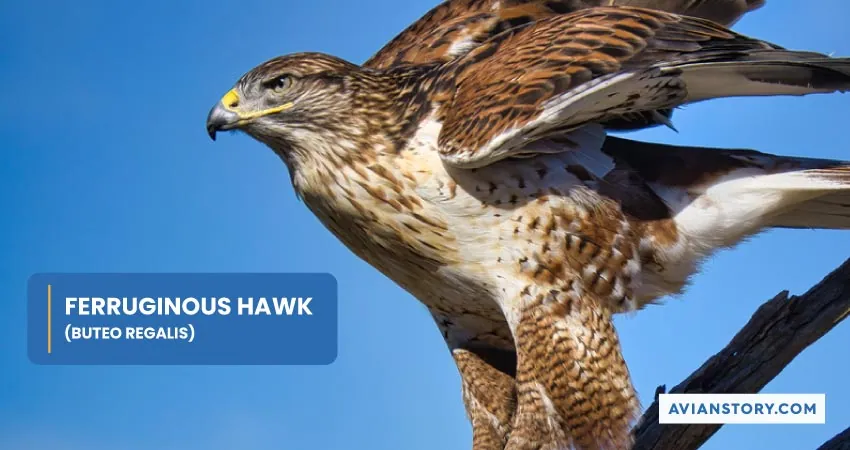
Although not that common, you can spot Ferruginous hawks in Oklahoma during the winter. According to the reports of local hawk spotters, they are present in the west of the state from October to February.
Attributes
These are the largest North American hawks. They have wide, rusty, white, or gray tails with broad and long wings. Their underparts are pale, and they have rusty brown backs.
The bellies of the Ferruginous hawks have a chestnut color to them. This color profile is also present on the chest and back of the birds.
They also have V-shaped wings. It is one of the things that sets these hawks apart from the other species.
Diet
The diet of Ferruginous hawks is very limited. It consists primarily of small mammals. However, they can chase after medium-sized animals, such as prairie dogs, when they are in groups.
Nesting Preference and Eggs
Ferruginous hawks are very social. They will usually be around ledges, haystacks, power poles, rock outcrops, and manmade structures. However, they prefer low cliffs, large trees, and shrubs for nests. If you happen to come across one in the breeding season, you will see 1 to 8 bluish-white eggs inside it.
| Name | Length | Weight | Wingspan | Commonly Found In | Behavior | Fun Fact |
| Northern Harrier | 16.14 to 19.68 inches | 0.69 to 1.69 pounds | 41 to 46 inches | Prairies, marshes, and open fields | Primarily solitary | These birds have a remarkable sense of hearing. |
| Sharp-Shinned Hawk | 9.4 to 13.4 inches | 0.19 to 0.48 pounds | 16.9 to 22.1 inches | Can be found in high montane forests and lowland habitats | Mostly solitary but become territorial when breeding | The hawk gets its name from the flatted and thin shanks or “shins.” |
| Cooper’s Hawk | 14.6 to 17.7 inches | 0.49 to 1.5 pounds | 24.4 to 35.4 inches | Edge of the forests and near bird feeders | Territorial and aggressive towards other raptors | These birds were named after William Cooper back in 1828. |
| Goshawk/Northern Goshawk | 20.9 to 25.2 inches | 1.40 to 3.01 pounds | 40.5 to 46.1 inches | In large forests, usually out of populated areas | Highly territorial | The bird gets its name from the Old English word “goose hawk.” |
| Common Black Hawk | 17 to 21 inches | 1.75 to 2.65 pounds | 48 to 50 inches | In woodland and near water where there is plenty of small mammals | Territorial | These raptors are diurnal birds. |
| Harris’s Hawk | 18.11 to 23.23 inches | 1.14 to 3.60 pounds | 40.55 to 46.85 inches | Near river woods, in open dry lands, and in bushes | Social and highly territorial | Harris’s hawks like to hunt in packs. They cooperate with one another during hunts. |
| Red-Shouldered Hawk | 16.9 to 24.0 inches | 1.07 to 1.71 pounds | 37.0 to 43.7 inches | Forests where large clearings are present and in open canopies | Solitary and very territorial | The Red-Shouldered hawks have a peculiar courtship ritual. They often fly together and roll on their backs occasionally. |
| Broad-Winged Hawk | 13.4 to 17.3 inches | 0.58 to 1.24 pounds | 31.9 to 39.4 inches | Edges of water and woods | Territorial and Solitary when they are not migrating | They often reuse the nest of other animals. |
| Swainson’s Hawk | 18.9 to 22.1 inches | 1.53 to 3.01 pounds | 46 to 54 inches | Scattered groves of trees and in prairie regions | Highly territorial during the breeding season | These birds migrate in swirling flocks. |
| Zone-tailed Hawk | 17.7 to 22.1 inches | 1.34 to 1.47 pounds | 46.9 to 55.1 inches | Foothills, cliffs, pine forests, and other areas that have uneven terrains | Aggressive and territorial | These birds can target preys that are up to 105 meters from the ground. |
| Red-Tailed Hawk | 17.7 to 25.6 inches | 1.52 to 3.22 pounds | 44.9 to 52.4 inches | Open areas such as swamps and agricultural lands. | Territorial | Have an eyesight that is 8 times better than humans. |
| Rough-Legged Hawk | 18.5 to 20.5 inches | 1.58 to 3.09 pounds | 52.0 to 54.3 inches | Around nestles of tundra and cliffs of low-lying boreal forests | Territorial | These birds like to live alone and are not social. |
| Ferruginous Hawk | 20 to 25 inches | 2 to 5 pounds | 52 to 56 inches | Old prairies, sage bushes, and open areas | Solitary | These birds get their name from the Latin word “Ferrum,” which stands for iron. |
Conclusion
Needless to say, there are many types of hawks in Oklahoma. However, if you want to spot most of them, you would want to be on the lookout during the months of May and August. Also, to see some of the rarest hawks of Oklahoma, consider venturing in the winter and fall.
Hawks Found in Nearby States of Oklahoma:
Relevant References:
- animalia.bio/common-black-hawk
- wildlifedepartment.com/outdoorok/ooj/changing-guard
